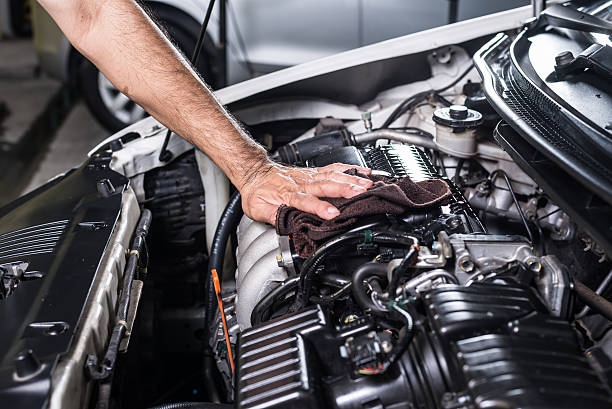When you were a student living at home, it’s probable that your parents took care of your car’s maintenance or reminded you when it needed repairs. When you live unaccompanied, you are in charge of your car care. Although it can be costly and time-consuming, long-term savings will result from your investment.
Unlike the third of college students who, out of sheer forgetfulness, change their oil less than twice per year. You can’t expect your car to maintain itself with magic. Stop relying on your family to remind you to change your oil or rotate your tires; instead, develop the habit of doing routine car care and using car cleaning accessories.
Every Time You Fill Up, Follow These Steps
while awaiting the fill-up of your tank, instead of reading credit card advertising while you stand at the gas pump, utilise that opportunity to conduct these quick car care chores while also carrying a cleaning car kit:
- Pristine Windscreen
You risk getting hurt if your windscreen is dusty or covered in bugs since it makes it harder to see the road. Could you keep it clean by cleaning it frequently? To thoroughly saturate the windscreen in the cleaning solution, use the spongy portion of the gas station squeegee. Then, carefully remove the squeegee by starting in the centre of the windshield and moving outward, wiping out any leftover streaks along the way.
This is important because using your car’s washer fluid and wipers to remove insect carcasses from your windscreen after a lengthy interstate ride will create a vast, smeary mess that further impairs your vision.
Give your headlights a squeegeeing as well if they’re dirty. Your wipers also contribute to keeping the windscreen clean.
- Verify The Air Pressure
Every month before long road trips, check the inflation pressure in each tire, including the spare, using a tire-pressure gauge. When the tires are cold, perform this. Instead of inflating tires to the all-out pressure stamped on their sidewalls, use the increased pressure that the vehicle’s manufacturer recommends.
Typically, the owner’s car care manual and the glove box placard provide the ideal pressure. Check tires for cuts, unusual or uneven wear, sidewall bulges, and abnormal or uneven wear.
- You Must Check and Increase the Amount of Oil as an Essential
For proper operation, your car needs motor oil. The most important chore is lubricating each moving part of your engine to stop them from malfunctioning and self-destructing. The oil filter receives all the toxic combustion by-products, which it gathers and transmits along with dissipating heat from the combustion process. If your engine is low on oil, your car can malfunction.
Make it a practice to regularly check your car’s oil to ensure there is always enough of it. Unless your owner’s car care manual states otherwise, every other gas fill-up should be sufficient. It’s straightforward to check the oil level on your car. It only takes a few minutes, a fresh paper towel, and adequate light. Because it takes around five minutes for the oil to return to the pan once you turn off the motor, you should put this task last.
The majority of automobiles serve the purpose of using some oil in between oil changes, and many manufacturers view a consumption rate of one quart every 1,000 miles as typical. Take your car in immediately to have it checked for external and internal leaks if you need to add a quart of oil every 500 miles.
Read Also : Green Landscaping
- Checks Not Just the Oil Change
Many automakers advise replacing the engine oil and filter every 7,500 miles or six months, whichever comes first, for regular driving. Most drivers will be satisfied with this. You must shorten the change time to every 3,000 miles or three months for “severe” driving, including frequent, icy starts, short excursions, dusty conditions, or trailer towing.
- Verify The Air Filter
Hold the air-filter element up to bright light after removing it. Replace it if you can’t see any light. In any case, adhere to the suggested car care intervals.
- Check The Boots with Constant-Velocity Joints
Examine the rubber boots, also famous as CV boots, that resemble bellows and are available on the drive axles of various four-wheel-drive and front-wheel-drive automobiles. Replace any that are cut or leaking right away. If debris contaminates the CV joint, an expensive repair will likely follow fast.
Endnote
To properly care for your car, use the advice from above. Using these car care techniques, you can easily maintain your vehicle in the sweltering heat. To keep your automobile sound and safe in the changing weather, you should also check for car safety guidelines and some essential car maintenance advice online at Carorbis.
Related Post: A Guide to Car Windshields: Choosing the Right One for Your Vehicle

